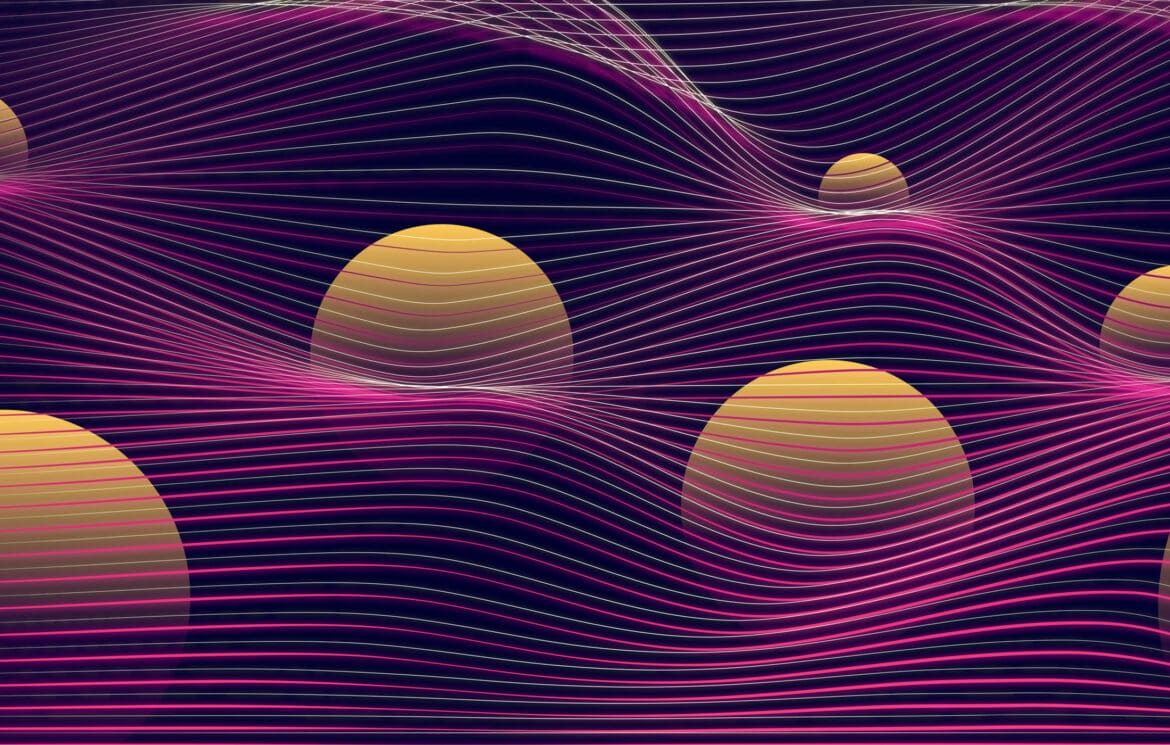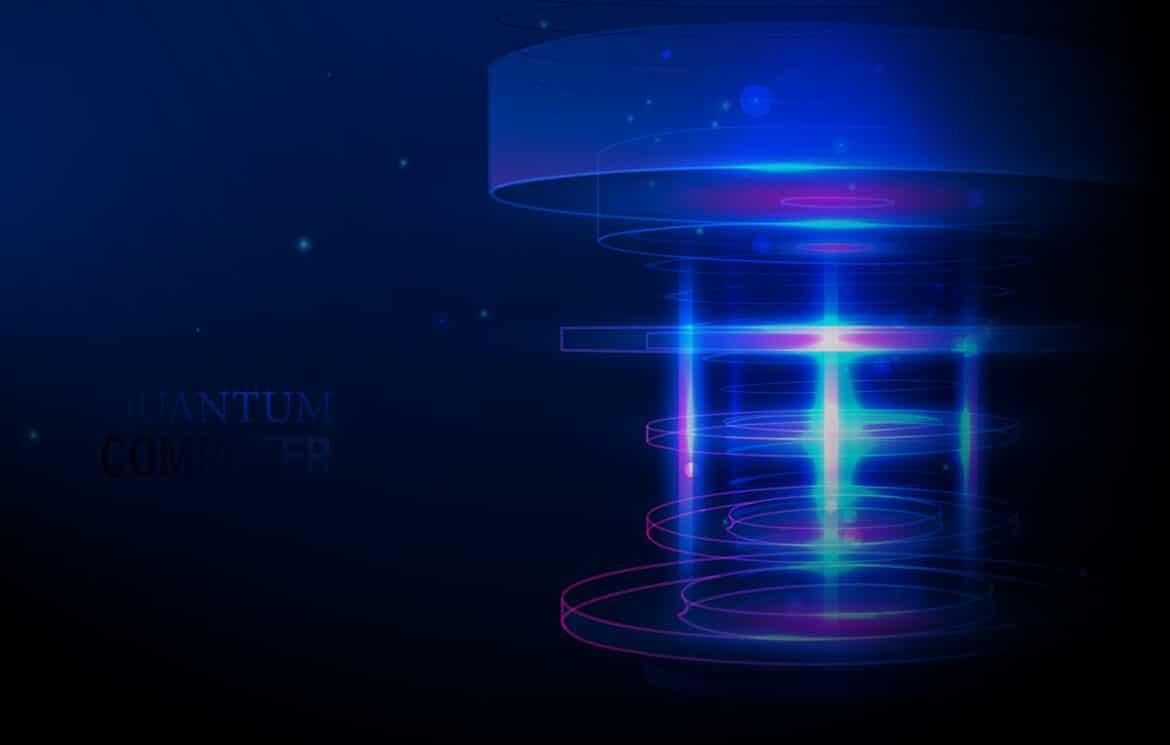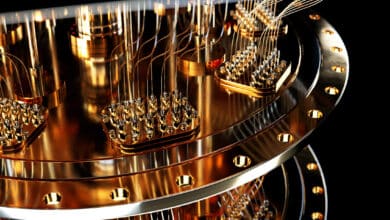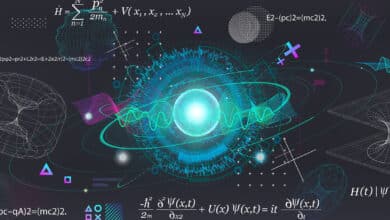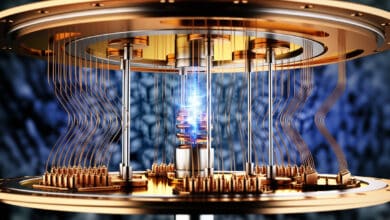Quantum Computing Modalities: Exotic and Emerging QC
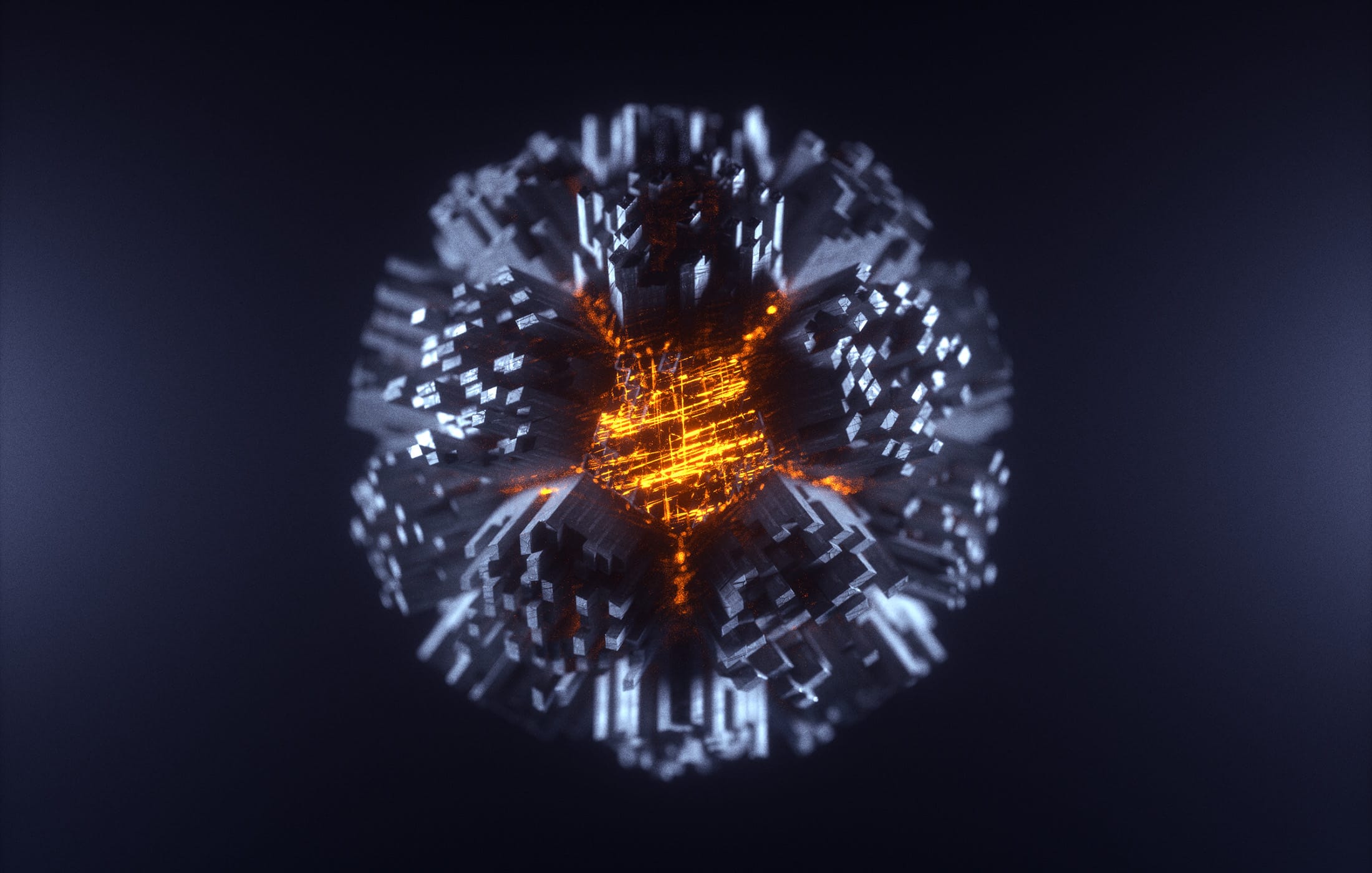
Table of Contents
(For other quantum computing modalities and architectures, see Taxonomy of Quantum Computing: Modalities & Architectures)
Quantum computing has thus far been dominated by gate-based (circuit) models and adiabatic/annealing approaches. These mainstream modalities have achieved milestone demonstrations, yet they face significant challenges in scaling up and dealing with errors. This has motivated researchers to explore a spectrum of unconventional quantum computing approaches that push beyond the standard models. In this survey, I will provide an overview of these “exotic and emerging” modalities and discuss why they exist, what common themes link them, how they compare to mainstream quantum computers, and what implications they might hold for the future. I’ll also introduce each modality in turn briefly here and in much more detail in dedicated posts – from quantum cellular automata and biological quantum computing to holonomic gates and time crystals – explaining each in high-level, non-technical terms.
Overview: Why Explore Unconventional Quantum Modalities?
Despite rapid progress, today’s quantum computers remain fragile and small-scale, largely limited by decoherence (loss of quantum information due to noise) and hardware complexity. The gate-based model (quantum circuits of logic gates on qubits) and the adiabatic model (gradually evolving a system’s Hamiltonian, as used in quantum annealers) are two well-established approaches. Each has strengths – gate models are universal (able to implement any quantum algorithm in theory) and annealers naturally tackle optimization problems – but each also has drawbacks. For instance, gate-based superconducting qubit systems require ultra-cold refrigeration and still suffer errors, while annealers like D-Wave machines solve a narrow set of problems and lack error correction.
These limitations fuel interest in alternative modalities that might offer intrinsic advantages. Researchers explore unconventional models in hopes of finding new ways to represent and manipulate qubits that could improve scalability, stability, or efficiency. Some exotic approaches aim to leverage novel physics (for example, topological states or quantum geometric phases) to protect information from errors. Others hybridize different techniques (combining analog and digital methods, or merging different hardware platforms) to get the best of each. In essence, these approaches exist because no one knows yet which quantum computing “recipe” will ultimately succeed – so it’s prudent and scientifically intriguing to investigate many pathways in parallel.
By venturing into less conventional ideas, scientists also probe the boundaries of what counts as a quantum computer. Could naturally occurring quantum processes (in chemistry or biology) be harnessed for computing? How little quantum coherence is enough to outperform a classical computer? Can we design a system that corrects its own errors? Questions like these drive the exploration of exotic modalities. While these approaches are mostly in theoretical or early experimental stages, they expand our understanding of quantum computation and sometimes even inform improvements in mainstream designs. The variety of modalities is a strength, providing multiple shots on goal toward a practical quantum computer and potentially revealing niche applications where a non-standard quantum processor outshines the rest.
Common Themes Among Emerging Modalities
Despite their diversity, many of these unconventional models share common themes and motivations:
- Leveraging Novel Physical Phenomena: A unifying theme is to exploit unique quantum physics beyond the usual two-level qubit systems. For example, topological quantum computing uses exotic quasiparticles (anyons) whose braiding statistics inherently protect information. Holonomic quantum computing uses geometric phase (Berry phase) effects to execute gates in a way that averages out certain errors. Dissipative computing dares to use the environment and controlled dissipation rather than fight it, steering the system to a desired state via engineered decay. Even concepts like time crystals – systems that spontaneously oscillate in time – are eyed as potential resources for stable quantum oscillators. In each case, new physics or states of matter are harnessed to overcome the limitations of standard qubit operations.
- Hybrid and Interdisciplinary Approaches: Many emerging modalities lie at intersections of fields or combine different architectures. Hybrid quantum computing explicitly mixes technologies – e.g. integrating superconducting qubits with photonic links, or coupling a quantum annealer with circuit-based error correction. Other approaches draw inspiration from biology (biological quantum computing) or neuroscience (neuromorphic quantum networks), blending concepts from living systems or artificial intelligence with quantum theory. There are also molecular and solid-state hybrids like proposals to use DNA or proteins as quantum information media, merging nanotechnology with quantum computing. This cross-pollination aims to capitalize on the strengths of each domain – whether it’s the self-assembling capability of DNA or the parallelism of neural networks – to push quantum computing forward.
- Focus on Scalability and Fault Tolerance: A driving motivation for new modalities is to address the scalability of qubit systems and their resilience to errors. Many exotic models explicitly target improved fault tolerance. For instance, topological qubits are designed so that quantum information is stored non-locally, making it immune to small local disturbances. Holonomic gates use global properties of evolution that naturally cancel out certain noise. Some approaches advocate building massively parallel architectures – like quantum cellular automata with potentially millions of identical cells operating in unison, or cluster-state computing where large entangled states serve as a buffer against errors. The use of error-correcting codes is another theme: e.g. quantum LDPC codes combined with cluster states (a form of measurement-based quantum computing) to actively correct errors while the computation proceeds. In short, improving stability as systems scale up is a central goal of these modalities, either through inherent physical robustness or clever architectural design.
- Specialization vs. Universality: Unlike the general-purpose gate model, some emerging modalities accept limited scope in exchange for near-term feasibility or performance on specific tasks. For example, boson sampling devices are not universal quantum computers – they can’t run arbitrary algorithms – but they excel at one task (sampling from a complicated distribution of photons) believed to be classically intractable. Such specialized quantum processors can act as testbeds for quantum advantage or serve particular applications (e.g. generating random numbers or solving certain physics problems) without needing full universality. On the other hand, some modalities like quantum cellular automata, topological QC, or holonomic QC strive for full universality just as the circuit model does, but propose a different route to get there. A common thread is the recognition that different problems may call for different quantum tools, and a one-size-fits-all quantum computer might not be the only endgame. We may envision a quantum ecosystem with various devices: highly specialized ones tackling narrow tasks extremely well, and hybrid general-purpose machines for broad algorithms.
- Minimalism and Fundamental Curiosity: Several exotic approaches are driven by the quest to understand the minimum requirements for quantum computation or to test the boundaries of quantum principles. The One-Clean-Qubit (DQC1) model asks how quantum computation fares when almost all qubits are “dirty” (randomized) – surprisingly, even a single clean qubit can give a computational edge. This informs theoretical limits of quantum advantage. Similarly, exploring quantum computing in biological systems tests if complex quantum coherence can persist in warm, noisy environments. These approaches may be less about immediate practical hardware and more about broadening the conceptual framework of quantum computing. By studying them, researchers gain insight into what truly makes quantum computers powerful and which aspects of quantum mechanics are essential for computational speedups.
Comparing Emerging Modalities to Mainstream Quantum Computing
How do these exotic modalities stack up against the familiar gate-based circuits and adiabatic annealers? Here we draw high-level comparisons in terms of computational power, noise resilience, and practical feasibility:
- Computational Power (Universality vs Specialized Power): Gate-based quantum computers are universal, able (in principle) to perform any computation given the right sequence of logic gates. Adiabatic quantum computers (annealers) are also thought to be universal under certain conditions, but in practice they effectively target optimization problems. The emerging modalities cover a spectrum. Some, like Quantum Cellular Automata or topological quantum computing, aim for universal computation just via a non-standard mechanism. Others are purpose-built for niche problems: e.g. Boson Sampling machines cannot do arbitrary calculations (they lack programmability for general algorithms) but they solve a very specific sampling problem exponentially faster than we believe classical computers can. In complexity theory terms, models like DQC1 redefine our understanding of quantum/classical boundaries – DQC1 can efficiently estimate a matrix’s trace where classical methods struggle, despite using highly mixed states. Overall, mainstream gate-models are the “all-rounders,” whereas many exotic systems are either aiming to be the next all-rounder by new means, or choosing to be sprinters rather than marathon runners (solving one hard problem extremely well rather than all problems).
- Noise Resilience and Error Handling: In today’s gate-model and annealing systems, error correction is a major overhead – dozens or hundreds of physical qubits might be needed to form one logical (error-corrected) qubit. Most mainstream approaches have little intrinsic noise tolerance, so they rely on active error correction protocols. By contrast, several emerging modalities bake noise resilience into the hardware or computing scheme. Topological qubits (e.g. based on Majorana zero modes) would store information in a distributed manner such that local noise has no effect – an error would require a global disturbance to change the encoded state. Holonomic quantum gates leverage geometric phase: because the result depends only on the path taken in parameter space and not on the speed or small fluctuations, certain control errors average out. Dissipative quantum computing actually uses coupling to an environment in a controlled way to drive the system toward the correct answer – effectively a form of self-correction where the “computer” is designed to relax into the solution state. Even analog quantum simulators or quantum annealers with bang-bang boosts can sometimes show robustness by avoiding certain error modes (for instance, fast pulsing in a bang-bang anneal might circumvent slow drifts). In summary, mainstream quantum computers treat noise as the adversary to be actively corrected, whereas many exotic modalities either make peace with noise or nullify it through physics: some use clever interference and entanglement structures to prevent errors, others use the environment or redundancy so errors don’t ruin the computation.
- Practical Feasibility and Maturity: Gate-based quantum computing (with platforms like superconducting circuits and trapped ions) and quantum annealing (with dedicated devices like D-Wave) have seen real experimental demonstrations – on the order of tens to a few hundred qubits in the lab today. In contrast, most emerging modalities are at earlier stages. Some have seen proof-of-concept experiments: for example, small-scale boson samplers have been built, with the notable Jiuzhang photonic experiment achieving a 76-photon sampling that was ~$$10^{14}$$ times faster than the best classical simulation. Holonomic gates have been demonstrated on small qubit systems (e.g. single-loop geometric phase gates on superconducting qubits). Quantum walks have been realized in controllable setups like photonic lattices or ion traps for simulating specific graphs. However, many other proposals remain highly theoretical or require technology not yet available. For instance, topological quantum computers await the definitive discovery of non-Abelian anyon states (e.g. Majorana modes) in solid-state systems – progress is being made, but a scalable topological qubit has not been achieved as of yet. Biological and DNA-based quantum computing are speculative with no concrete hardware, as researchers first need to confirm that long-lived coherence or entanglement can exist and be controlled in such complex molecular systems. In terms of technology readiness, gate-model QCs and annealers lead the pack, while exotic modalities range from demonstrated in principle (e.g. boson sampling, small cluster-state fusion experiments) to purely conceptual (quantum computing inside living cells). It’s worth noting that some exotic ideas may quietly fold into mainstream architectures – for example, fusion-based cluster state computing is being actively pursued by companies (like PsiQuantum) in the photonic quantum computing realm, effectively bringing a once-theoretical modality into an engineering effort.
- Operational Modes (Digital, Analog, Hybrid): Gate-based computing is a digital model – sequences of discrete gate operations – whereas quantum annealing is an analog process – a continuous evolution of a Hamiltonian. The emerging modalities introduce a blend of modes. Quantum walks and continuous-variable systems are more analog in nature (evolving continuously or dealing with continuous spectra). Bang-bang annealing and some hybrid architectures explicitly mix analog evolution with digital control pulses, blurring the line between annealer and circuit. Measurement-based quantum computing (related to cluster states) is a kind of hybrid too: it’s digital in that one performs sequences of measurements (classical yes/no outcomes), but the resource state is created analogously through entanglement. By exploring these modes, researchers hope to find more efficient or controllable schemes. For instance, analog modalities might leverage natural physics (less overhead to implement a given Hamiltonian than to compile it into many gates), whereas digital modalities offer programmability. The exotic approaches often try to get the best of both worlds – e.g., adiabatic topological computing marries analog Hamiltonian evolution with topological protection. In comparing to mainstream, one might say the exotic modalities expand the menu of how a quantum computation can be carried out: not just by gate sequences or slow anneals, but via oscillating phases, walking excitations, engineered dissipation, etc.
In summary, the emerging modalities challenge the mainstream by offering alternative balances between universality, robustness, and implementability. They are diverse in philosophy – some are competitors to eventually realize a general quantum computer in a better way, while others are complementary, targeting tasks or conditions the mainstream models aren’t well suited for. Gate model and adiabatic computers remain the primary workhorses for current quantum computing prototypes, but the lessons and innovations from these exotic ideas are gradually influencing the design and outlook of quantum computing as a whole.
Potential Implications for the Future of Quantum Computing
What could these unconventional approaches mean for the future? If even a few of these ideas bear fruit, the implications could be significant in several ways:
- Scalability Breakthroughs: One of the biggest hopes is that an exotic modality will unlock a path to scale quantum computers to millions of qubits. For example, a working topological quantum computer would inherently handle error correction, potentially reducing the qubit overhead needed for a large-scale machine. This could accelerate the timeline to useful quantum computing by sidestepping some of the hardest parts of scaling (namely, continuous error suppression). Likewise, modalities like fusion-based cluster state computing (using photonic qubits) aim to build huge entangled states by networking many small units. If successful, this modular approach could divide the complexity and allow optical quantum computers to grow in size much more easily than monolithic architectures. Even if these schemes remain challenging, they spur development of new components – e.g. better single-photon sources, or novel materials for anyons – which incrementally push the scalability frontier.
- Fault Tolerance and Stability: The quest for a stable quantum computer could be aided greatly by modalities that embed fault tolerance into hardware. Topological and holonomic techniques are prime examples of approaches that, if realized, would make qubits naturally robust to certain errors. This doesn’t eliminate the need for error correction entirely, but it could reduce its burden. Another intriguing prospect is dissipative or self-correcting quantum systems: if a quantum computer could be designed like certain quantum memories that naturally return to the correct state when perturbed, maintaining coherence could become far easier. While no fully self-correcting quantum computer exists yet, research into exotic quantum phases (e.g. topological color codes, time crystal stabilized states, etc.) might one day yield qubits that passively resist decoherence. The implication is a shift from today’s finely error-managed machines to tomorrow’s more forgiving quantum hardware, which would make operating quantum computers much more practical.
- Diverse Quantum Computing “Species” for Different Tasks: In the future, we might not have a single type of quantum computer that does everything, but rather a variety of quantum devices, each optimized for particular classes of problems. For instance, quantum annealers (potentially enhanced with digital controls) could become the go-to workhorses for optimization tasks in logistics, finance, or machine learning. Photonic boson samplers or continuous-variable systems might specialize in simulating molecular vibrations or generating certified randomness for cryptography. Gate-based universal quantum computers (perhaps hybridized with some topological qubits for memory) could handle general algorithms like Shor’s factoring or Grover search. And maybe biologically integrated quantum sensors or computers could find use in biomedical applications, if concepts from quantum biology pan out, allowing quantum information processing at room temperature inside lab-on-a-chip devices or even living cells. In other words, exotic modalities could lead to a more heterogeneous landscape of quantum technologies, each finding its niche where it outperforms both classical and other quantum methods.
- New Applications and Interdisciplinary Synergies: Exploring exotic modalities can also broaden the applications of quantum technology. For example, neuromorphic quantum computing sits at the intersection of quantum computing and artificial intelligence; success there could revolutionize machine learning by providing quantum-accelerated neural networks for pattern recognition or optimization tasks. Time crystal-based devices might improve quantum clock stability or signal processing, impacting precision measurement science. If quantum processes in biology were understood and harnessed, it could lead to quantum-enhanced biosensors or novel medical imaging techniques leveraging entanglement at biological scales. Even if these particular applications seem far-fetched now, the point is that new modalities often bring fresh perspectives and techniques that can find uses beyond just speeding up number-crunching. Already, the pursuit of exotic quantum computing has led to advances in materials science (e.g. in searching for topological superconductors), photonics (ultrabright photon sources, nanophotonic circuits), and control electronics (for hybrid systems). These spin-off benefits mean that, even on the journey to a quantum computer, we gain new tools and knowledge with practical impacts in other fields.
- Redefining Quantum Computing Concepts: On a more intellectual level, the success (or even just the study) of these modalities can redefine what we consider a “computer.” For example, DQC1 (one-clean-qubit model) showed that entanglement isn’t the only measure of quantum computational power – high mixed-state entropy can still yield a quantum speedup. Boson sampling experiments helped refine complexity theory by defining tasks that are intermediate between easy and intractable, thus sharpening our understanding of quantum vs classical computation limits. Quantum walks provided new quantum algorithms and intuition linking random walks to quantum speedups. In the future, if a modality like “Quantum computing in living cells” were realized, it would blur the line between computer and organism – potentially leading to computing systems that heal, grow, or evolve. While that remains speculative, the mere consideration expands our imaginative horizons of computation. In summary, exotic modalities force us to question assumptions and explore the full space of quantum computation, which can lead to deeper theoretical insights and perhaps surprise breakthroughs in how we process information.
In essence, the implications of these emerging approaches are twofold: first, any one of them could be a game-changer if it overcomes current roadblocks (making quantum computing more scalable, stable, or application-specialized); and second, collectively they enrich the quantum technology ecosystem, ensuring the field explores every avenue and benefiting science and engineering along the way. The future quantum computer that achieves widespread impact may well incorporate ideas from several of these modalities – a hybrid of the best innovations – as researchers mix and match techniques that prove effective.
A Glimpse at Exotic Quantum Modalities (Brief Introductions)
Below we provide a short, non-technical introduction to a variety of “exotic and emerging” quantum computing modalities. Each of these represents a distinct approach to processing quantum information, highlighting the creativity and breadth of the field beyond the standard models:
Quantum Cellular Automata (QCA)
Quantum Cellular Automata are the quantum analog of classical cellular automata, like a quantum “Game of Life” played out on qubits. In a QCA, computation is distributed across a grid of cells (quantum bits or higher-dimensional quantum systems) which update their states in parallel according to local rules. Unlike a traditional circuit model, there is no central processor or long-range gate — each cell interacts only with its neighbors in each time step, and yet a global computation emerges from these local interactions. Theoretically, certain QCA schemes can perform universal quantum computation, meaning they can simulate any quantum circuit given the right initial setup and rule set. This modality offers a vision of highly parallel, inherently local processing, which could be advantageous for scaling: instead of wiring many gates to many qubits, a QCA would naturally involve many qubits evolving together. QCA are also of interest for simulating physics – they can model quantum dynamics in lattices and even quantum field theories in a discrete way. However, implementing QCA in hardware is challenging. It requires precise design of local interactions and synchronizing updates, something only realized in very small experiments so far. Still, research is ongoing to bridge the gap between the elegant theory of QCA and practical devices. If achieved, a large-scale QCA could operate as a massively parallel quantum computer, potentially offering new routes to scalability and error management through its cellular structure.
Biological Quantum Computing
Biological Quantum Computing asks the intriguing question: do quantum computations happen in nature, and can we harness them? This modality is twofold. First is the idea of biology as the computer, suggesting that certain processes in living organisms might naturally exploit quantum effects to process information. For example, studies have found that photosynthesis in plants and algae involves quantum coherent energy transfer – essentially, excitations exploring multiple paths simultaneously to find the most efficient route. There are hypotheses (albeit controversial) that quantum processes in the brain (perhaps in microtubule structures in neurons) could contribute to cognitive function or even consciousness. So far, no definitive evidence of the brain as a quantum computer exists, but these ideas motivate interdisciplinary research in quantum biology. The second aspect is biology-inspired quantum hardware: using biological materials or principles to build quantum devices. For instance, one could imagine using complex molecules, proteins, or DNA as qubits, or as scaffolds to hold qubits in a stable configuration. Biological systems have the advantage of operating at room temperature and self-assembling with atomic precision (DNA origami, for example, can arrange nanoparticles or molecules in designed patterns). If quantum coherence could be sustained in such structures, we might get quantum computers that don’t require extreme lab conditions. Today, this modality is highly speculative – we have hints of quantum effects in biology, but no clear evidence of organisms performing non-trivial quantum algorithms. Still, the potential payoff (quantum devices that function in ambient conditions, or new computing algorithms inspired by nature) keeps researchers curious. Even if the end goal is distant, studying quantum phenomena in biology enriches our understanding of both life and quantum physics, and it could lead to hybrid technologies like quantum sensors in biological environments.
DNA-Based Quantum Information Processing
DNA-Based Quantum Computing envisions using DNA — the molecule of life — as part of quantum information systems. DNA computing has already been studied in a classical sense, using strands of DNA to perform combinatorial calculations via chemical reactions. The quantum leap here is to incorporate quantum superposition and entanglement into DNA-based systems. There are a couple of angles to this: one is using DNA’s remarkable self-assembly properties to build nano-scale quantum hardware. DNA can act as a molecular scaffold, positioning quantum components (like tiny quantum dots, spin centers, or other qubits) with nanometer accuracy by encoding assembly instructions in base-pair sequences. This could help construct complex quantum circuits from the bottom up, potentially aiding scalability by literally growing quantum hardware. Another angle is more speculative: using the quantum states of the DNA molecules themselves to carry information. DNA has electron orbitals and vibrational modes that, in theory, could exhibit quantum behavior. Harnessing DNA’s quantum states could mean storing qubits in the spin of electrons in DNA or using excitations that pass through DNA as information carriers. The appeal of DNA is that it is an abundant, cheap, and well-understood material with atomic precision structure and room-temperature stability. If we could get it to reliably host qubits or mediate quantum gates, we’d have a scalable and biocompatible quantum platform. Right now, this approach is in very early stages – mostly theoretical proposals and small experiments (e.g., investigating electron transfer through DNA which might be quantum-coherent). Down the road, DNA-based quantum processing might merge with other technologies, like using DNA to position color centers in diamonds or superconducting nanoparticles, combining the best of bio and quantum. It’s a great example of how quantum computing research is reaching into nanotechnology and chemistry for solutions to build better qubits.
Dissipative Quantum Computing
In most quantum computing, dissipation and decoherence (interaction with the environment) are enemies that destroy quantum information. Dissipative Quantum Computing turns that notion on its head by using dissipation as a tool for computing. The basic idea is to design a quantum system that, through its natural interaction with a carefully engineered environment (like a tailored bath or reservoir), will relax into the solution of a computational problem. This approach is inspired by analogies to classical analog computing – for example, a classical electrical circuit can settle into a low-energy state that encodes the answer to a problem. In the quantum realm, one would set up a process (described by a Lindblad master equation in open quantum systems theory) such that the unique steady-state of the evolution is the quantum state representing the correct answer. By simply waiting (or continuously pumping the system in the right way), the quantum computer “computes by relaxing” to the answer state. A landmark theoretical result showed that with the right series of dissipative operations, one can perform universal quantum computation this way. The potential advantages here include automatic error correction: if the environment is engineered so that any deviation from the desired state is damped away, the computation might be inherently stabilized (a form of self-correcting quantum computer in principle). Also, this modality can overlap with adiabatic computing – both involve finding low-energy (or steady) states, but dissipative computing doesn’t require the process to be perfectly adiabatic or isolated. However, the practical challenges are significant: you need extremely fine control over the system-environment interaction, essentially “programming” the environment – something we can’t do precisely with current technology. It’s hard to keep a quantum system open in exactly the right way without unintended noise creeping in. Despite being speculative, research into dissipative computing is conceptually valuable. It suggests new ways to think about error correction and has inspired ideas like dissipative preparation of entangled states (using lasers and carefully tuned decay processes to produce entanglement). In the long term, if we learn how to tame dissipation, we might build quantum devices that always naturally fall into computing the answer, potentially simplifying the operation of quantum hardware.
Adiabatic Topological Quantum Computing
This modality is a hybrid of two cutting-edge ideas: adiabatic quantum computing (AQC) and topological quantum computing. Adiabatic Topological Quantum Computing proposes to perform computations by slowly (adiabatically) evolving a system’s Hamiltonian while that system stays within a protected topological phase. In topological quantum computing, the usual concept is to manipulate anyons (quasiparticles in 2D materials with exotic statistics) by braiding them around each other to form gates – a process which is inherently resistant to small errors. Adiabatic topological computing suggests a slightly different approach: instead of physically braiding particles, you could interpolate the system’s Hamiltonian in time so that the effect of braiding is achieved as a controlled energy transition. In other words, the system is prepared in a topologically protected state, and then you change parameters (very slowly, adiabatically) so that by the end of the evolution, the state has undergone a topological transformation (equivalent to a desired quantum gate). The benefit is that you don’t need to move particles around – which is experimentally daunting – you only need to vary fields or couplings in a certain sequence. Throughout the process, if done correctly, the system never leaves the safety of the topological phase, so it remains shielded from local disturbances (that’s the theory, at least). This concept is very theoretical at this stage – it’s an active area of research combining ideas from condensed matter physics and quantum computing. It showcases how modalities can combine: using topological protection for stability and adiabatic control for implementing logic operations. Should this approach materialize, it could provide a way to leverage topological qubits without the full complication of microscopic braiding. The system’s Hamiltonian might be manipulated via external knobs (voltages, magnetic fields) to enact computations in a smooth but protected fashion. While no adiabatic topological quantum computer exists yet, the concept illustrates the creativity in the field – sometimes the best route is mixing two promising ideas to see if the sum can overcome the challenges that each alone faces.
Boson Sampling (Gaussian and Non-Gaussian)
Boson Sampling is a quantum computing model that caught attention for being a relatively feasible way to demonstrate a quantum advantage, even though it’s not a universal quantum computer. The setup is conceptually simple: you have a bunch of identical bosons (typically photons) entering a network of beamsplitters and phase shifters (an optical interferometer), and you measure how they exit (for photons, this means detecting how many photons end up in each output mode). The computational task is to sample from the probability distribution of possible outcomes – essentially, each configuration of photon detections has some probability amplitude, and we want to generate samples according to those probabilities. It turns out that for a sufficiently large number of photons and modes, this sampling problem is thought to be intractable for classical computers, because it’s related to calculating the permanent of large matrices (a #P-hard problem in complexity theory). Scott Aaronson and Alex Arkhipov proposed in 2011 that even a rudimentary photonic device doing boson sampling would provide evidence of quantum computational power beyond classical limits. Indeed, boson sampling became a hot pursuit in photonic labs worldwide. There are two variants: “standard” boson sampling uses single photons (indistinguishable Fock-state bosons), whereas Gaussian boson sampling uses squeezed light sources (which produce photons in certain correlated pairs) – the latter is easier to do with existing optical technology like squeezers and detectors, and still hard for classical simulation. In 2020 and 2021, landmark experiments in China (USTC’s Jiuzhang device) and Canada (Xanadu’s Borealis photonic quantum computer) implemented boson sampling with tens to hundreds of modes, clearly demonstrating a quantum advantage in sampling speed. These devices churned out samples way faster than any known classical algorithm could simulate the same process. However, a boson sampler is highly specialized – it can’t be programmed to run Shor’s algorithm or Grover’s search, for example. It’s basically built for one job. That said, boson sampling isn’t just a parlour trick; it has potential applications. One is in generating certified random numbers (useful for cryptography) because the outputs are inherently random but verifiably linked to a hard-to-simulate distribution. Another is in quantum chemistry: certain molecular spectroscopy problems (like finding vibrational spectra of molecules) can be mapped to a boson sampling task. Boson sampling thus represents an alternative modality of quantum computing: rather than full universal control, it harnesses naturally occurring interference of many particles to solve a specific hard problem. It has shown that even limited quantum devices can outperform classical computers at something, a fact which fuels optimism and further research into special-purpose quantum machines.
Quantum Walk Computing
A Quantum Walk is essentially the quantum counterpart of a classical random walk, where a “walker” moves on the nodes of a graph. In the quantum version, the walker can exist in a superposition of locations, and interference effects can amplify certain paths and cancel others. Quantum walks can be in discrete time (with a “coin” qubit that decides the direction of each step) or continuous time (where the walker’s evolution is governed by the graph’s adjacency matrix treated as a Hamiltonian). Quantum walks are not just a curious phenomenon; they have been shown to be a powerful model for designing quantum algorithms. In fact, any conventional quantum circuit can be translated into an equivalent quantum walk on a suitably constructed graph – which means the quantum walk model is computationally universal in theory. However, quantum walks provide different intuition and sometimes more natural algorithms for certain problems. For example, algorithms for finding an element or hitting a marked state on a graph can be sped up by quantum walks (with famous examples like the Shenvi-Kempe-Whaley search algorithm or Ambainis’s algorithm for element distinctness). From a paradigm perspective, one could imagine a quantum computer that is built to naturally implement a quantum walk. That might look like a lattice or network of qubit nodes where a particle or excitation can hop around – perhaps easier to engineer for certain problems than a full circuit network. Indeed, quantum walk experiments have been done in physical systems such as photonic lattices (where photons hop between waveguides) and trapped ions (where ions have states corresponding to positions). These are analog quantum simulators of quantum walks, and they can solve particular instances of problems like traversing graphs or optimizing network flow by essentially letting the quantum walk find the target via interference. While a “quantum walk computer” per se is not a standard device on the market, the concept heavily influences quantum algorithm design and some special-purpose hardware. It’s a reminder that the same end computation can be reached by very different means: you can apply gates one by one (like discrete steps), or you can let a quantum process like a walk evolve continuously – both are valid and sometimes one is easier or more insightful for a given task. Quantum walks thus straddle the line between modality and algorithm: they’re a framework for thinking about quantum computations that has yielded practical algorithms and could inspire future hardware optimized for such continuous evolutions.
Neuromorphic Quantum Computing
Neuromorphic Quantum Computing is what you get when you mix ideas from brain-inspired computing (neuromorphic engineering) with quantum computing. In classical computing, neuromorphic typically refers to architectures modelled after neural networks – lots of simple processing units (neurons) with parallel, often asynchronous operation and weighted connections (synapses), as opposed to the sequential, clocked operation of a typical CPU. Now, if we translate that into the quantum realm, we imagine networks of qubits operating similarly to neurons, potentially updating their quantum states in tandem according to some interaction rules. One concrete angle is the notion of a quantum neural network – an algorithmic construct where qubits take on the role of neurons and the system learns or processes information in ways analogous to a classical neural net, but using quantum superposition and entanglement to explore richer dynamics. Another angle is hardware-oriented: perhaps creating a physical network of quantum units (like spins or superconducting qubits) that naturally evolves according to equations similar to those of a neural network (for example, a spin glass system can be thought of as a neural net with certain energy minimization behavior). Some researchers talk about quantum memristors or other components that would be quantum analogs of neuron behavior. This modality is still taking shape, but one could say it’s partly realized by the field of quantum machine learning, where quantum computers (gate-model ones, so far) are used to accelerate or improve machine learning tasks – a logical neuromorphic approach. The more physical approach – building quantum hardware that itself functions like a neural net – is very exploratory. Possibly, a network of qubits with local interactions (similar to QCA or a lattice) could be trained to behave like a Boltzmann machine or perform pattern recognition, using quantum effects to sample from complicated probability distributions more efficiently than classical neural nets. The motivation here is twofold: leverage quantum computing to boost AI, and use the brain-inspired approach to potentially get a robust, parallel quantum architecture. The brain tolerates faults and noise far better than our engineered computers do; maybe a brain-like quantum system could be more resilient or easier to scale in some respects. As of now, neuromorphic quantum computing is largely theoretical and at the simulation stage (quantum neural network algorithms on paper, or small scale implementations on existing quantum hardware). But it represents a forward-looking fusion of two of the most exciting computing modalities – if successful, it might yield quantum systems adept at tasks like pattern recognition, optimization, or sensor data processing, complementing the more arithmetic-focused quantum algorithms.
Holonomic (Geometric Phase) Quantum Computing
Holonomic Quantum Computing is all about using geometry to do quantum operations. In conventional gate-based computing, to perform a qubit gate, you typically apply some time-dependent interaction (say, a microwave pulse for a certain duration) to enact an evolution that rotates the qubit’s state. The holonomic approach instead leverages the Berry phase (geometric phase) acquired by a quantum state when it is driven around a closed loop in parameter space. Think of it like tying a knot in the abstract space of states: when you come back to the start, the state might gain a phase that depends only on the geometric properties of the path taken, not on how fast you went. If you arrange those phases between different components of a qubit’s state cleverly, you can implement logic gates. For example, one can imagine changing magnetic fields or laser parameters in a cyclic manner such that the qubit state traces a loop and ends up with a phase difference between |0⟩ and |1⟩ states equal to, say, π/4 – voila, a phase gate is achieved purely geometrically. Why do this? Because geometric phases are inherently robust against certain types of errors. If a noise source causes a small fluctuation in timing or the trajectory, as long as the overall loop in parameter space is the same (or topologically equivalent), the geometric phase remains the same. This means holonomic gates can be fault-tolerant to some control errors by design; they depend on global features (like the area enclosed by the path) rather than local details. Holonomic quantum computing was proposed as a way to make quantum gates less sensitive to noise, and it can be applied in any physical system where you can smoothly vary parameters. Experiments have shown holonomic single-qubit and two-qubit gates in setups like NMR, superconducting qubits, and NV centers in diamond. It’s not a full architecture on its own – you still need a hardware platform to run it – so you can think of it as a design philosophy for gates that could be used within other modalities. Some researchers treat it as a separate modality because it changes how you conceive of the logic operations: it’s the difference between dynamic gates (based on time-duration of interactions) and geometric gates (based on path shape of interactions). If widely adopted, holonomic techniques could significantly improve the fidelity of quantum operations, bringing us closer to error-tolerant computation without needing as many correction cycles. It exemplifies how abstract mathematical principles (here, differential geometry) can directly inspire practical methods in quantum computing.
Time Crystals and Quantum Computing
Time Crystals are a recently observed phase of matter that breaks time-translation symmetry – in simpler terms, a system that shows periodic oscillations in time without being driven by an external periodic force. It’s like a clock that ticks on its own, forever, in its lowest energy state. This concept sounds very exotic (and it is!), but physicists have managed to create and observe time-crystalline behavior in certain quantum systems, like trapped ions and spin systems, typically under out-of-equilibrium conditions (in Floquet systems). Now, the connection to quantum computing is speculative but intriguing: a time crystal could serve as a very stable periodic oscillator or timing reference at the quantum level. One idea is using a time crystal as a quantum clock that could orchestrate operations with extreme precision or serve as a robust memory element that cycles among states in a predictable way. Because time crystals are a ground state phenomenon, the hope is that their oscillations are resilient – they don’t die out because the system is already in its lowest energy configuration, yet it keeps evolving in time. In practice, integrating a time crystal into a quantum computer is still far-fetched. Some have imagined, for instance, a superconducting qubit setup where a time crystal provides a stable RF signal that could be used for gating or error correction cycles without an external oscillator. Another thought: if you could somehow entangle a computational qubit with a time-crystal degree of freedom, you might get a quasi-stable qubit that naturally cycles through a series of states – perhaps useful for certain algorithms or as a novel form of qubit refresh. It’s important to note that time crystals are not a method to compute by themselves, but rather an exotic state that might be harnessed within a computing scheme. At this point, mentioning time crystals in the context of quantum computing is largely about looking toward the horizon – it shows the breadth of ideas being considered. Time crystals prove that weird things are possible in quantum systems; whether that weirdness can be turned into computing utility is an open question. Even if they don’t directly become part of quantum processors, studying them can lead to better understanding of coherence and stability in many-body systems, which indirectly helps quantum information science.
One-Clean-Qubit Model (DQC1)
The DQC1 model, also known as the “one clean qubit model” or sometimes the “power of one qubit,” is an unconventional computational model that really challenges our intuition about what is needed for quantum computing. In DQC1, you start with only a single qubit in a pure (clean) state, and all the other qubits in your system are in a maximally mixed, hot state (essentially random). You then let that one pure qubit interact with all the others through some unitary operations, and at the end you measure the pure qubit. Astonishingly, even though the system is almost entirely noisy, this model can efficiently do something that we don’t know how to do efficiently classically: it can estimate the normalized trace of a large unitary matrix (or equivalently, the sum of its eigenphases). This task includes as a special case computing the Jones polynomial of certain knots, which is related to topological problems and is believed to be hard for a classical computer. The fact DQC1 can do this with only one qubit of “quantumness” and a bunch of junk qubits is remarkable. It defines a complexity class (called DQC1) that sits somewhere between classical and fully quantum. Why is this interesting? For one, it suggests that even very noisy quantum systems (like those in liquid-state NMR experiments, which originally inspired this model) might still offer computational power beyond classical. It’s also a theoretical lens: by studying DQC1, researchers learn about what resources (like entanglement, coherence, etc.) are truly necessary for a quantum advantage. It turns out DQC1 states have almost no entanglement, but they do have other quantum correlations (called discord). So it has spurred a lot of work in quantum information theory. From a practical view, DQC1 isn’t going to solve all problems – it appears limited in scope (you can’t do Shor’s algorithm with one clean qubit, as far as we know!). But it might be relevant for near-term quantum computers that have lots of noise: maybe certain computations don’t require fully pure states. Also, if you consider something like analog quantum sensors or detectors that interact with environments, DQC1-like scenarios could emerge, and understanding them might lead to new protocols. In summary, DQC1 is a minimalist quantum computing modality that shows value can be extracted from a very low-quality quantum register. It’s a reminder that quantum advantage might sometimes be achieved with surprisingly little in the way of pristine resources, which is a heartening thought for experimentalists battling noise.
Quantum Annealing + Digital Boost (“Bang-Bang” Annealing)
Quantum Annealing is an approach where one encodes a problem (often an optimization problem) into the low-energy state of a quantum system, and then the system is allowed to evolve gradually so that it hopefully ends up in that lowest energy state, thus giving the solution. D-Wave’s machines are a well-known example, using hundreds of qubits to anneal solutions to Ising-model formulations of problems. However, pure annealing has limitations: if the evolution is too slow, external noise or minor errors can kick the system, and if it’s too fast, the system might get stuck in an excited state due to tunneling gaps (Landau-Zener transitions). “Bang-Bang” annealing refers to injecting some digital control into the annealing process – essentially giving it a “kick” or series of kicks, rather like how bang-bang control works in engineering (sudden switches between extreme controls). In practice, this could mean interrupting the smooth anneal with abrupt changes: for instance, pausing at certain points, rapidly quenching some parameters, or applying brief pulses to the qubits during the anneal. These maneuvers can help the system avoid settling into a wrong state or can steer it more quickly toward the answer. A prominent example of a digital boost to annealing is the Quantum Approximate Optimization Algorithm (QAOA), which essentially slices an annealing process into a few discrete steps (with adjustable angles) and optimizes those steps with the help of a classical computer. QAOA can be seen as a trotterized (digitized) version of an anneal: instead of a continuous change, you have a sequence of alternating Hamiltonians applied for certain times. Bang-bang annealing in general covers any hybrid algorithm where part of the process is analog (letting the quantum system evolve under a Hamiltonian) and part is digital (explicit pulses or measurements that guide the evolution). The hope is to get better performance than either method alone – e.g., more reliable convergence to the optimum than plain annealing, and ability to use more qubits than fully gate-based circuits can currently handle (since annealing hardware often can connect many qubits in analog fashion). From a modality standpoint, this hybrid annealer/circuit approach is attractive for near-term devices: it acknowledges that current hardware has finite coherence, so a full long circuit might fail, but a quick anneal plus a few kicks might succeed. It’s also a way to use classical computation in tandem (for parameter setting or mid-run corrections), heralding the broader concept of variational quantum algorithms where a classical optimizer tweaks a quantum process. If bang-bang techniques prove effective, future quantum optimizers might routinely blend analog physics with digital logic to solve problems faster and more accurately. This modality illustrates how blurring the line between the two main models (analog annealing and digital gates) can yield something potentially better than both for certain tasks.
Photonic Continuous-Variable (CV) Quantum Computing
Most quantum computing discussions focus on qubits – two-level systems. Continuous-variable (CV) quantum computing takes a different route, using quantum systems characterized by continuous spectra. The most common examples are modes of the electromagnetic field (light), which have observables like the electric field quadratures that take a continuum of values. Instead of qubits |0⟩ and |1⟩, in CV we often talk about quantum states of light like coherent states, squeezed states, etc., which live in an infinite-dimensional Hilbert space. In practice, a popular CV approach is to use squeezed light and beam splitters to create large entangled states (called cluster states) of many optical modes. Measurement-based quantum computing can then be performed by homodyne measurements on these modes. Gaussian operations (like squeezers, beam splitters, phase shifts) are relatively easy to do and can generate a lot of entanglement deterministically – unlike qubit photons which often require probabilistic gates. To be fully universal, CV computing needs a non-Gaussian element (because Gaussian-only operations are efficiently simulatable classically). This usually means a resource like photon counting, cubic phase gates, or non-Gaussian states injected into the system. One exciting aspect of CV photonic computing is scalability: we have experimentally created entangled states of thousands of modes of light in the lab, using frequency combs and time-multiplexing techniques. Companies like Xanadu are pursuing CV approaches, using squeezed light to eventually build a universal optical quantum computer. They demonstrated Gaussian boson sampling (a variant mentioned earlier) with 216 modes, which is a stepping stone on this platform. Another advantage is that photonic systems can operate at room temperature and can be integrated on optical chips, and they naturally interface with communication (optical fiber, etc.), which bodes well for connecting quantum machines or building quantum networks. A challenge, however, is error correction: because the space is infinite-dimensional, new error correction codes are needed (like the Gottesman-Kitaev-Preskill (GKP) code, which cleverly embeds a qubit into a CV mode’s phase space). If those can be implemented, CV computers might achieve fault tolerance in a very different way than qubit-based ones. In summary, photonic CV computing is a full-fledged alternative modality, essentially analog quantum computing with light. It’s a vibrant research area and has the potential to realize large-scale quantum processors that look more like optical analog signal processors than digital electronic computers. The contrast with mainstream qubit QC is stark but complementary: CV uses continuous degrees of freedom and has easy entanglement generation, whereas qubit approaches use discrete levels with easier logic gate definition. Both have the same end goal – universal quantum computation – and it will be fascinating to see which can be scaled up faster or which finds particular niches (for instance, CV might shine in quantum communication integrated tasks).
Quantum LDPC Codes and Cluster-State Computing
This item refers to a trend in quantum architecture that heavily leans on quantum error correction and entanglement. Quantum LDPC (low-density parity-check) codes are quantum error-correcting codes that, like their classical LDPC counterparts, use sparse check operators to correct errors efficiently. Meanwhile, cluster states are large, highly entangled states that serve as the resource for measurement-based quantum computing (MBQC). Combine these, and you get approaches like fusion-based quantum computing and topological cluster states, where the entire quantum computation is carried out on a huge entangled network of qubits with error-correcting properties. One prominent example: the plan by PsiQuantum (a photonic quantum computing company) involves generating small entangled units of a few photons and then fusing them together via Bell measurements to build a massive cluster state on the fly. The cluster state is structured in a 3D lattice that has fault-tolerant properties (often using a form of topological code or LDPC code embedded in it). This way, as computations proceed by measurements, errors can be detected and corrected within the cluster state, achieving fault tolerance. The reason this is sometimes called a new modality is that it’s quite different from the circuit picture: you prepare a giant entangled state first (or continuously grow it), and computing is just making measurements on it. The fusion-based approach is attractive for photonics because making two photons interact directly is hard, but measuring them jointly (a partial projection) is easier. By doing many pairwise fusions (measurements), you effectively network small quantum modules into a big one. Quantum LDPC codes are an important piece because they promise high error correction efficiency (with checks that involve only a few qubits each, even as the code spans many qubits) – this could dramatically lower the overhead compared to more commonly discussed codes like the surface code. If these codes are implemented via cluster states, the outcome is a machine where the physical qubits are almost entirely devoted to error correction and connectivity, leaving the logical computation to be carried out in the correlations across the cluster. It’s a modality in the sense of architecture: a modular, networked quantum computer rather than monolithic. It’s being pursued now: several companies and labs are working on demonstrators that generate and fuse cluster state segments (sometimes called entangled photon factories). If successful, this approach could lead to scalable quantum computers that look like quantum internet-like networks of small pieces constantly entangling with each other to maintain a large computation. It’s a departure from the isolated fixed circuit of the gate model and shows how thinking in terms of entanglement distribution and error correction from the ground up can yield a very different machine design.
Quantum Cellular Automata in Living Cells
This is perhaps the most imaginative entry on our list. Quantum Cellular Automata in Living Cells combines two radical ideas: quantum cellular automata (QCA) and biological quantum computing. The notion here is whether we could implement a quantum cellular automaton inside a living cell, using the cell’s own molecular components as the “cells” of the automaton. For instance, one might imagine each cell’s organelle or each protein complex being a quantum bit that interacts with its neighbors via some biochemical process that has quantum coherence. If cells naturally perform complex information processing (they do, in a biochemical sense), one could ask: could some of that be quantum, or could we program cellular processes to act out quantum computations? This idea is extremely speculative – currently, there’s no evidence that large-scale quantum coherence can be sustained in the warm, wet, noisy interior of a cell in a way that would allow computations beyond trivial scales. Decoherence in such an environment would ordinarily destroy quantum information almost instantly. However, as a thought experiment, considering quantum cellular automata in living cells pushes the boundary of what one might consider a computer. It merges the self-replicating, self-sustaining qualities of biology with the computational power of quantum mechanics. In practical terms, this could mean trying to use certain biological molecules (like arrays of spin-carrying proteins, or electrons hopping through metabolic pathways) to set up a QCA. Research in this direction is nascent – more in theoretical proposals than lab work – but there are adjacent efforts like using biomolecules for quantum sensing or trying to maintain coherence in biological systems for quantum metrology. If one day a form of quantum information processing is achieved inside a cell, it could revolutionize both computing and biotechnology. One could envision “living computers” where colonies of cells perform quantum calculations or where a cell’s genetic circuits are quantum-enhanced. Again, we are far from this reality; this concept currently serves more as a dreamscape for interdisciplinary researchers, highlighting the ultimate possibilities. It underscores that quantum computing doesn’t necessarily have to happen in a sterile semiconductor chip – in theory, life itself could be a substrate, if only we understood and controlled it at the quantum level.
Hybrid Quantum Computing Architectures
As quantum technologies advance, a clear trend is emerging: hybrid architectures that combine the strengths of different quantum (and classical) systems. A Hybrid Quantum Computing Architecture might refer to several things, such as:
- Combining different types of qubits in one machine – e.g., superconducting qubits for fast processing coupled with memory qubits made of nuclear spins (which are slower but longer-lived), or integrating trapped-ion qubits with photonic interconnects that link distant ions. This way, each qubit platform handles the task it’s best at (fast gates vs. long storage vs. long-distance communication).
- Combining analog and digital quantum operations – as we discussed with bang-bang annealing, one could have a core annealer or analog simulator augmented by some qubit logic operations to fine-tune the computation.
- Combining quantum and classical processors in a tightly coupled way – technically every quantum computer today is hybrid because we need classical control. But future architectures might have, say, a classical AI that dynamically adjusts quantum operations based on measurement feedback in real time, effectively embedding a quantum computer as an accelerator in a larger classical system (or vice versa).
The goal of hybrid designs is to get the best of all worlds: utilize the fast operations of some systems, the stability of others, and the interconnects of yet others. For example, a hybrid might use superconducting qubits for most computation but periodically swap the quantum state into a network of optical photons that can transmit the information without loss to another part of the computer (maybe for modular scaling). Or consider a chip that has both electron-spin qubits and photon qubits, where electrons interact strongly (good for gates) and photons carry information between distant chips (good for scaling). Another hybrid scenario is a quantum-classical cloud: a classical supercomputer working in tandem with a quantum coprocessor, where the quantum part tackles specific hard subroutines (like factoring, simulation of quantum chemistry, etc.) and passes results back to the classical machine. In fact, the near-term usage of quantum computers (via cloud services) is exactly that – hybrid algorithms like variational quantum eigensolvers rely on a classical optimizer to guide the quantum device. In hardware terms, we might see integrated packages where classical electronics and quantum hardware sit side by side for fast feedback loops. The implication of hybrid architectures is a very pragmatic one: instead of waiting for a perfect quantum computer that does it all, we build composite systems that leverage what’s available. This mirrors how classical computing evolved (we use GPUs for graphics, CPUs for general computing, FPGAs for reconfigurable tasks, all in one system). It’s likely that the first quantum computers to solve real-world problems will be hybrids – not just one kind of qubit or one mode of operation. By designing with hybridization in mind, engineers can mitigate the weaknesses of one technology with the strengths of another. For instance, if superconducting qubits can’t easily go beyond a certain number, network a few of those processors with photonics; if an analog method gives a rough answer, refine it with a few quantum gates via a digital step. We’re already seeing early hybrid systems (like quantum annealers that allow some qubit-specific programming, or IonQ’s systems that can use both gates and an analog mode). As the field progresses, hybrid quantum computing might become the standard modality: a flexible architecture that isn’t purely one approach, but a tailored mixture optimized for performance and scalability.
Embracing Speculation: Why Explore These Frontiers?
Many of the approaches described above are speculative, unproven, or far from practical realization. So why do researchers and organizations invest time and resources in these exotic modalities? The motivations are both pragmatic and intellectual:
- Hedge Against the Unknown: We simply don’t know which approach (or combination of approaches) will ultimately yield a large-scale, fault-tolerant quantum computer. By exploring multiple modalities now, the field avoids putting all eggs in one basket. This parallel exploration is like having multiple shots on goal for a breakthrough. If superconducting gate-based circuits hit a wall, perhaps photonic cluster states or topological qubits will provide a way forward. The diversity is a form of insurance that increases the odds of success in the long run.
- Potential for Breakthrough Payoffs: Each unconventional modality carries the possibility – however remote – of solving the current roadblocks in quantum computing. For example, if topological qubits are realized, the payoff is huge: drastically lower error rates. If biological quantum computing were somehow achieved, it could lead to quantum processors that work at room temperature, revolutionizing the accessibility of the technology. The history of technology shows that sometimes outlier ideas (semiconductor transistors in the age of vacuum tubes, neural networks after early AI winters) can suddenly mature and outperform established methods. Researchers keep speculative ideas alive so that if the moment is right, they can blossom.
- Scientific Curiosity and Interdisciplinary Insight: Many of these modalities arise from pure curiosity about nature and the limits of quantum mechanics. Does quantum mechanics play a role in cognition or life? What’s the smallest or messiest quantum system that can still do something computationally non-trivial? Such questions drive experiments and theory that enrich science as a whole, not just computing. Even if quantum brain theories turn out incorrect, investigating them can lead to new knowledge in neuroscience or biophysics. The One-Clean-Qubit model didn’t give us a new computer, but it taught us about quantum correlations and complexity classes. Time crystal research is unveiling new states of matter that might have uses in precision timekeeping or beyond. In short, the pursuit of exotic modalities often yields collateral insights – in physics, chemistry, biology – that justify the effort by expanding human knowledge.
- Cross-Pollination of Ideas: Speculative quantum computing research tends to be highly interdisciplinary. Physicists, computer scientists, mathematicians, engineers, and even biologists start to talk to each other, leading to innovation. For instance, thinking about dissipative computing has cross-pollinated with quantum error correction, as scientists consider how engineered environments might serve to correct errors automatically. Work on boson sampling connected complexity theory with optical experimentation, bringing new rigor to how we test quantum advantage. The influence of these ideas can often be seen creeping into the mainstream: e.g., QAOA (inspired by mixing analog and digital) is now a leading algorithm for near-term devices; fusion-based photonic computing (once just a theory) is now in startup roadmaps. By pushing boundaries, researchers often invent techniques or discover phenomena that can be fed back into more immediate quantum computing efforts.
- Inspiration and Long-Term Vision: There’s also an aspirational aspect. Working on exotic modalities keeps the community’s imagination active and provides a long-term vision that extends beyond the next incremental improvement. It attracts talent who are excited by big ideas. Government and academic institutions often support high-risk, high-reward research because the eventual impact, if successful, would be transformative (sometimes literally Nobel-worthy). And even if a specific approach doesn’t pan out, elements of it might find use. For example, say quantum computing in living cells never works – along the way, that research might produce new techniques in quantum sensing or in controlling quantum dots in bio-compatible ways, which could impact medical technology. No exploration is truly wasted; it’s a matter of when and how the insights will manifest usefully, not if.
- Adapting to Challenges: As we build early quantum computers, we continually find new engineering challenges. Some speculative ideas are pursued precisely because the conventional approach to a problem isn’t working well. A concrete example: standard error correction requires too many qubits, so researchers consider alternative error-resilient designs like topological codes or dissipative processes. If one day we find that scaling beyond, say, 1000 qubits is problematic in solid-state devices, researchers might double down on something like modular photonic links or QCA, etc. Having a base of knowledge in these alternatives means the community can pivot or adapt strategies as needed, guided by prior research rather than starting from scratch.
In conclusion, speculative quantum modalities are the research playground where future breakthroughs might be born. They represent humanity casting a wide net into the sea of possibilities that quantum mechanics affords. Not all will turn into practical computing devices – in fact, most won’t. But the very act of exploring them is crucial. It ensures that the progress of quantum computing isn’t limited by our initial assumptions or current technology. Instead, it keeps the field dynamic and creative, possibly revealing surprise routes to quantum computing that we would otherwise miss. As one survey of quantum approaches noted, the multitude of modalities “from the mainstream to the exotic” provides a roadmap of parallel paths, any of which could lead to the goal. By walking many of those paths at once, researchers aim to shorten the overall journey to truly transformative quantum computers.
Quantum Upside & Quantum Risk - Handled
My company - Applied Quantum - helps governments, enterprises, and investors prepare for both the upside and the risk of quantum technologies. We deliver concise board and investor briefings; demystify quantum computing, sensing, and communications; craft national and corporate strategies to capture advantage; and turn plans into delivery. We help you mitigate the cquantum risk by executing crypto‑inventory, crypto‑agility implementation, PQC migration, and broader defenses against the quantum threat. We run vendor due diligence, proof‑of‑value pilots, standards and policy alignment, workforce training, and procurement support, then oversee implementation across your organization. Contact me if you want help.
